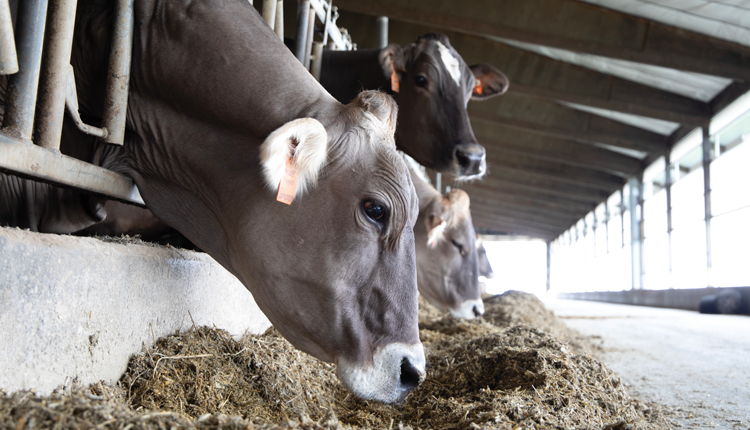
We conducted an eight-week study to address this question. One treatment had a static diet with 25% starch, and the other oscillated from 22% to 28% starch (25% for two days, 28% for two days, 25% for two days, 22% for 2 days, repeated). Starch variation was achieved by changing the proportion of corn silage and high-moisture corn in the diet. Cows had the same milk production and intake on average, but saw greater day-to-day variation. Interestingly, cows adjusted their feeding behavior patterns. Cows fed the oscillating starch diet spent more time at the feedbunk, had more meals per day, and experienced shorter intervals between meals. These cows also had more day-to-day variation in feeding behavior.
Understanding the sources of nutrient variation and how to minimize it is key. Nutrient composition of feeds and forages and their inclusion rates in the TMR are the main sources of variation. Controlling the nutrient variation of forages is not an easy task but can be minimized by following good silage-making practices. Proper harvest planning to reduce variation in forage maturity and ensuring particle size and processing are adequate goes a long way. Defacing the entire bunker face and mixing with the bucket loader before adding silage to the mixer can minimize variation, too. Do not forget to measure and adjust for forage dry matter, as this could alter the inclusion rates. For other ingredients with high variation in nutrient composition (i.e. wet by-products), having a smaller inclusion rate minimizes the impact of that feed on TMR nutrient variation. Having multiple ingredients providing the same nutrient (i.e. various protein sources) also lessens variation.
Consistent TMR batches require proper training. Make sure feeders know the ins and outs of their job. What is the correct mixing time, order of ingredient loading, and mixer revolutions per minute (rpm)? All of these may change depending on the type of mixer. Do not forget to check for equipment wear. These factors not only introduce day-to-day variation, but also feedbunk variation. Improving the consistency of a TMR across the feedbunk ensures all cows have access to the same diet and help boost milk production.
Lastly, relying on nutrient composition is important. But this is only effective if the nutrient composition is accurate. A protocol for sample collection goes a long way. If sampling a bunker for example, make sure the entire face is defaced and mixed prior to collecting the sample. Consider collecting more than one sample of feeds that have a large variation in particle size (i.e. corn silage).








